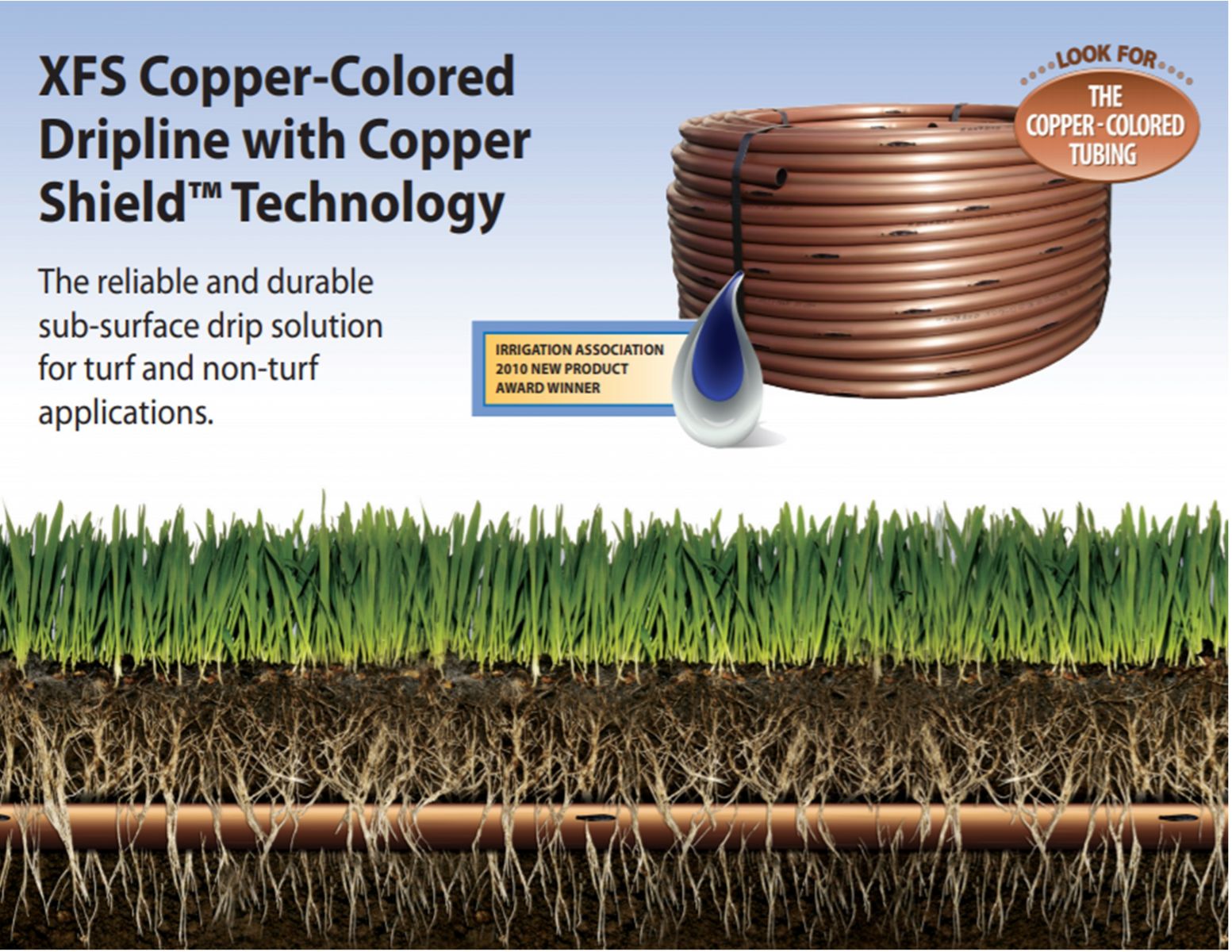Pop up sprinklers or sub surface drippers?
Author: Stefan Palm Date Posted: 2 May 2022
If you're planning a lawn project, a watering system is an essential component. As soon as you start researching, you'll soon figure out that there is a lot of choice on what to use. So what is the best type of watering system for you?
It may seem like an odd time to talk about watering systems with winter on the way. With colder and wetter weather on the radar, it would be easy to park the idea of a watering system for your new lawn project, which is why now is a good time to talk about it! Regardless of the time of year that you tackle your lawn project, an irrigation system is an essential component and one that's best done at the time of installation rather than attempting to retro-fit it down the track when the inevitable warm weather to come convinces you that it isn't such a bad idea after all!
There are two main types of systems to consider: pop-up sprinklers and underground or subsurface drippers. As with anything, there are pros and cons to each, and with a little bit of knowledge, it's easy enough to figure out the best type for you. Let me start by saying that both will do the job of delivering water to your lawn, and both can be installed as a DIY project – even if you don’t have much irrigation experience. Both work; both have been proven and successfully used for decades. It isn’t so much a question of which one is better but rather which one suits you and your circumstances the best.
Pop-up sprinklers
Just about everyone knows what pop-up sprinklers are and has probably had some experience with them. This is by far the most common method of watering your lawn. Pop-up sprinkler technology has come a long way in the last few years and there are a few different types to choose from, including:
- Regular/traditional spray sprinklers
- Stream rotors
- Gear drive sprinklers
Have a read of my recent blog on understanding the best types of pop-up sprinklers to understand the differences.
Pop-ups are typically installed around the outside of your lawn and spray water from overhead. The most efficient and versatile are rotator-type sprinklers such as Hunter MP rotators and Rainbird R-Vans. These sprinklers deliver water slower than traditional popups and require less pressure and flow to operate, meaning you can have more of them running simultaneously. .jpg)
Pro’s
- Are cheaper to install than drippers (about 1/2 the cost)
- Are easy to install and can be done DIY by most people.
- Because they spray water from the top, it's easier to water in fertiliser and chemicals
Cons
- Use more water than drippers.
- Because water is sprayed from overhead, the water can be blown around, evaporate, and run off.
- Can overspray into areas where you don’t want water (decks, paths, pools, driveways etc.)
If you want to know more about where to start on your irrigation project, have a look at our video on How to install sprinklers
Sub Surface Drippers
This is a system where you install a network of dripper pipes underneath your lawn, usually about 100mm below the surface. Drippers are built into a special type of poly pipe, spaced every 300mm. Sometimes you'll hear that underground dripper systems don't work and are unreliable. We've heard this too; however, this opinion comes from instances where the system hasn't been installed correctly, or the wrong type of pipe has been used. It is often the case where a less expensive above-ground drip pipe is used instead of the kind that is designed to be buried. I can assure you that subsurface systems work exceptionally well when done properly.
 Pro’s
Pro’s
- Drippers are more water-efficient. This type of system uses less water than sprinklers to do the same job as water is delivered directly to the root zone.
- Better in windy areas as there is no surface water to blow around
- Better for sloping areas because there is no runoff
- Very little evaporation
Cons
- Dripper systems are more expensive to buy upfront than sprinkler systems – up to twice as much. This can be a deterrent to choosing this type of system; however, if you consider the reasons you'd use a system like this and the long term saving of water, you can quickly start to justify the cost.
- Some types of drippers can get clogged with lawn roots over time. This is called root intrusion and happens because the lawn roots like to hunt down the water source. The traditional way to prevent this is by injecting chemicals into the pipes to kill off the roots. Because we don’t like the idea of this, we promote a chemical-free type of dripper pipe called Rainbird Coppershield. Through its innovative design, Rainbird guarantees it against root intrusion without the use of chemicals.
To get more of an idea of how a dripper system works and how to install it yourself, have a look at our video on How to install Underground drippers
When it comes to DIY installing an irrigation system - were here to help. Have a look at our extensive online resources to help you get your project started. We stock all the major brands at competitive prices and can provide you with a free design and quote when you're ready. More importantly, we'll back you up with all the help you need to get your system installed, even if you've never installed an irrigation system before.


